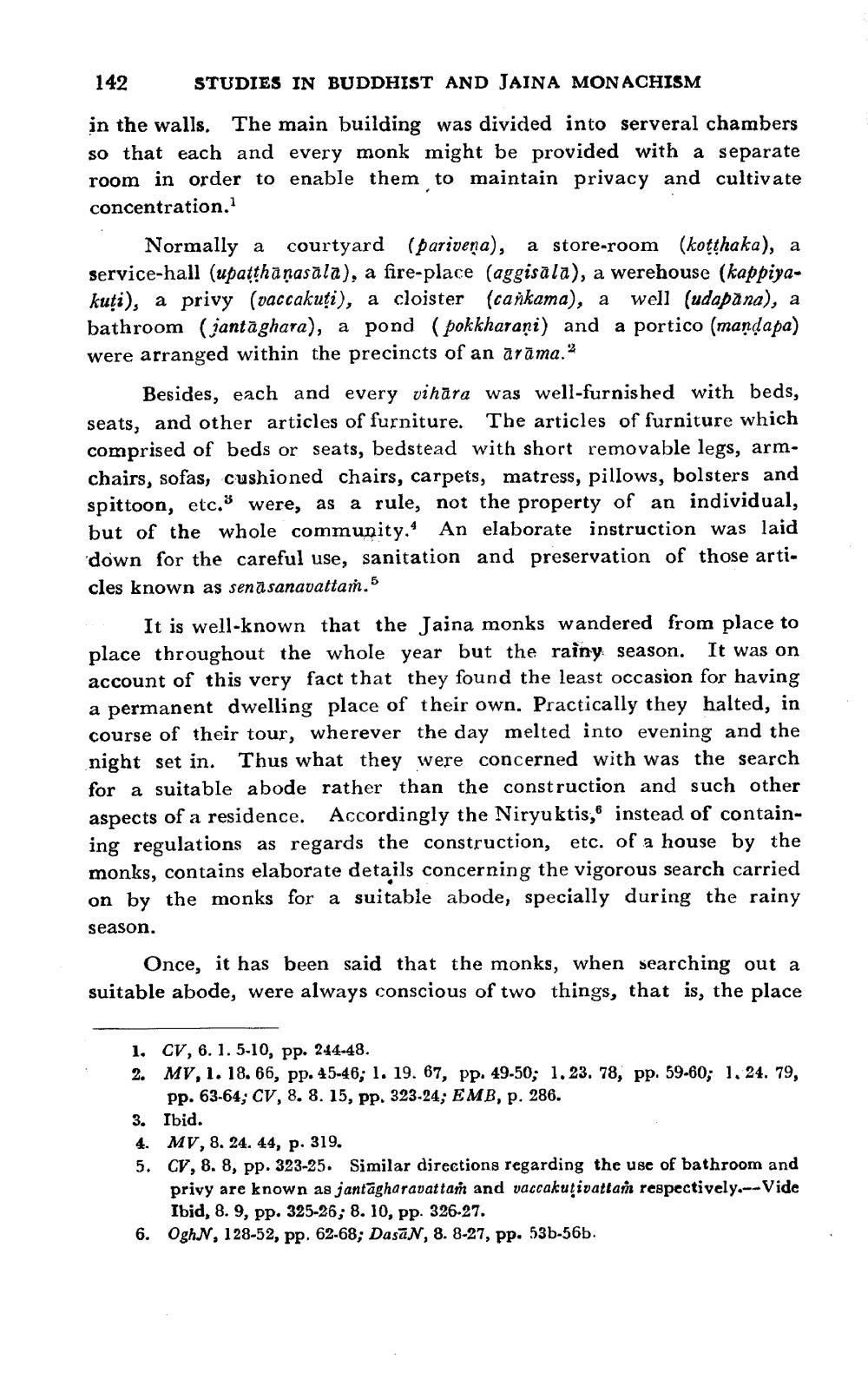________________
142
STUDIES IN BUDDHIST AND JAINA MONACHISM
in the walls. The main building was divided into serveral chambers so that each and every monk might be provided with a separate room in order to enable them to maintain privacy and cultivate concentration,
Normally a courtyard (parivena), a store-room (kotthaka), a service-hall (upatthäņasāla), a fire-place (aggisala), a werehouse (kappiyakuți), a privy (vaccakuti), a cloister (cankama), a well (udapāna), a bathroom (jantāghara), a pond (pokkharani) and a portico (mandapa) were arranged within the precincts of an arama. 2
Besides, each and every vihāra was well-furnished with beds, seats, and other articles of furniture. The articles of furniture which comprised of beds or seats, bedstead with short removable legs, armchairs, sofas, cushioned chairs, carpets, matress, pillows, bolsters and spittoon, etc.3 were, as a rule, not the property of an individual, but of the whole community. An elaborate instruction was laid down for the careful use, sanitation and preservation of those arti. cles known as senasanavattam.
It is well-known that the Jaina monks wandered from place to place throughout the whole year but the rainy season. It was on account of this very fact that they found the least occasion for having a permanent dwelling place of their own. Practically they halted, in course of their tour, wherever the day melted into evening and the night set in. Thus what they were concerned with was the search for a suitable abode rather than the construction and such other aspects of a residence. Accordingly the Niryuktis,& instead of containing regulations as regards the construction, etc. of a house by the monks, contains elaborate details concerning the vigorous search carried on by the monks for a suitable abode, specially during the rainy season.
Once, it has been said that the monks, when searching out a suitable abode, were always conscious of two things, that is, the place
1. CV, 6.1.5-10, pp. 244.48. 2. MV, 1. 18. 66, pp. 45-46; 1. 19. 67, pp. 49-50; 1.23. 78, pp. 59-60; 1. 24. 79,
pp. 63-64; CV, 8. 8. 15, pp. 323-24; EMB, p. 286. 3. Ibid. 4. MV, 8. 24. 44, p. 319. 5. CV, 8. 8, pp. 323-25. Similar directions regarding the use of bathroom and
privy are known as jantāgharavattań and vaccakuțivattam respectively.--Vide
Ibid, 8. 9, pp. 325-26; 8. 10, pp. 326-27. 6. OghN, 128-52, pp. 62-68; Dasāx, 8. 8-27, pp. 53b-56b.




